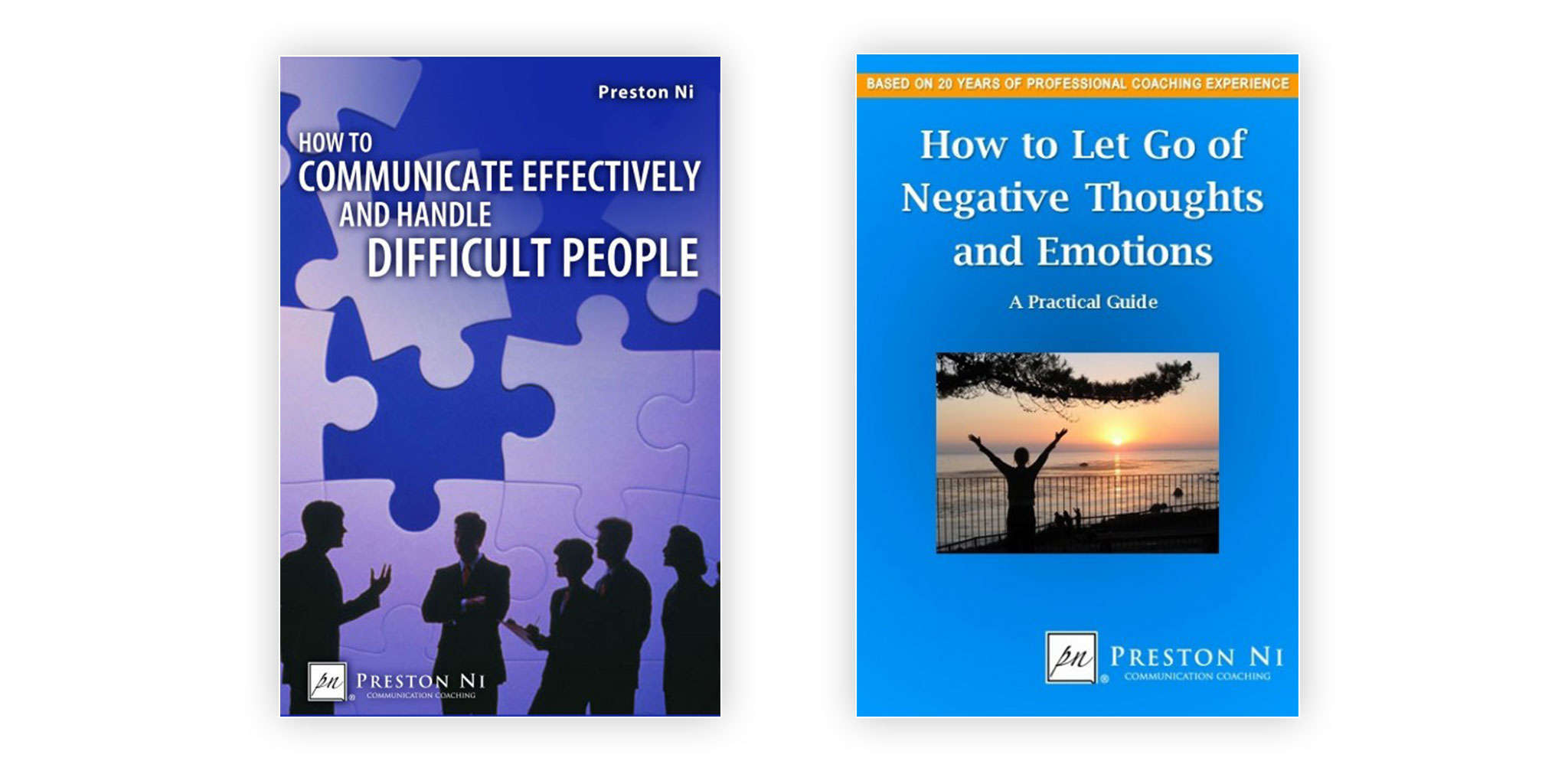6 key ways of dealing with difficult people
Are you dealing with a challenging person at work, at home, or in another part of your life? It’s easy to let an unreasonable individual affect us and ruin our day. What are some of the ways you can empower yourself in such situations? Below are eight key ways to dealing with difficult people, with references to my book How to Communicate Effectively and Handle Difficult People. Keep in mind that these are general rules of thumb, and not all of the tips may apply to your particular situation. Simply utilize what works and leave the rest.
1. Keep your cool
The first rule in the face of an unreasonable person is to maintain your composure. The less reactive you are, the more you can use your better judgment to handle the challenge. When you feel angry or upset with someone, before you say something you might later regret, take a deep breath and count slowly to ten. In most circumstances, by the time you reach ten, you would have figured out a better way of communicating the issue, so that you can reduce, instead of escalate, the problem. If you’re still upset after counting to ten, take a time-out if possible, and revisit the issue after you calm down. By maintaining self-control, you harness more power to manage the situation.
2. Are they worth it?
Not all difficult individuals we face require direct confrontation about their behavior. Some people are simply not worth tussling with. Your time is valuable, so unless there’s something important at stake, don’t waste it by trying to change or convince a person who’s negatively entrenched. Whether you’re dealing with a difficult colleague or an annoying relative, be diplomatic and apply the tips from this article when you need to interact with them. The rest of the time, keep a healthy distance.
More specifically, there are two scenarios under which you might decide not to pick a battle. The first is when someone has temporary, situational power over you. For example, if you’re on the phone with an unfriendly customer service representative, as soon as you hang up and call another agent, this representative will no longer have power over you.
Another situation where you might think twice about confrontation is when, by putting up with the difficult behavior, you derive a certain benefit. An example of this would be an annoying co-worker: although you dislike her, she’s really good at providing analysis for your team, so she’s worth the patience. It’s helpful to remember that most difficult people have positive qualities as well, especially if you know how to elicit them (see keys #4 and 5).
In both scenarios, you have the power to decide if a situation is serious enough to confront. Think twice, and fight the battles that are truly worth fighting.
3. Reduce personalization & shift from reactive to proactive
When you feel offended by someone’s words or deeds, come up with multiple ways of viewing the situation before reacting. For example, I may be tempted to think that my friend is ignoring my calls, or I can consider the possibility that he’s been very busy. When we avoid personalizing other people’s behaviors, we can perceive their expressions more objectively. People do what they do because of themselves more than because of us. Widening our perspective of the situation can reduce the possibility of misunderstanding.
Another way to reduce personalization is to try to put ourselves in the difficult individual’s shoes, even for just a moment. For example, consider the person you’re dealing with, and complete the sentence: “It must not be easy to…”
“My child is being so resistant. It must not be easy to deal with his school and social pressures…”
“My manager is really demanding. It must not be easy to have such high expectations placed on her performance by management…”
“My partner is so emotionally distant. It must not be easy to come from a family where people don’t express affection…”
To be sure, empathetic statements do not excuse unacceptable behavior. The point is to remind yourself that people do what they do because of their own issues. As long as we’re being reasonable and considerate, difficult behaviors from others say a lot more about them than they do about us. By reducing personalization, we can be less reactive and concentrate our energy on problem-solving.
4. Separate the person from the issue
In every communication situation, there are two elements present: the relationship you have with this person, and the issue you are discussing. An effective communicator knows how to separate the person from the issue − to be soft on the person and firm on the issue. For example:
“I want to talk about what’s on your mind, but I can’t do it when you’re yelling. Let’s either sit down and talk more calmly, or take a time out and come back this afternoon.”
“I appreciate you putting a lot of time into this project. At the same time, I see that three of the ten requirements are still incomplete. Let’s talk about how to finish the job on schedule.”
“I really want you to come with me. Unfortunately, if you’re going to be late like last time, I’ll have to leave without you.”
When you’re soft on the person, people are more open to what you have to say. When you’re firm on the issue, you show yourself as a strong problem solver.
5. Use appropriate humor
Humor is a powerful communication tool. Years ago I knew a co-worker who was quite stuck up. One day a colleague of mine said “Hello, how are you?” to him. When the egotistical co-worker ignored her greeting completely, my colleague didn’t feel offended. Instead, she smiled good-naturedly and quipped, “That good, huh?” This broke the ice and the two of them started a friendly conversation. Brilliant.
When appropriately used, humor can shine light on the truth, disarm difficult behavior, and show that you have superior composure. In How to Communicate Effectively and Handle Difficult People, I explain the psychology of humor in conflict resolution, and offer a variety of ways one can use humor to reduce or eliminate difficult behavior.
6. Set consequence
The ability to identify and assert consequences is one of the most important skills we can use to “stand down” a difficult person. Effectively articulated, consequence gives pause to the challenging individual, and compels her or him to shift from obstruction to cooperation. In How to Communicate Effectively and Handle Difficult People, consequence is presented as seven different types of power you can utilize to affect positive change.
In conclusion, to know how to handle unreasonable and difficult people is to truly master the art of communication. As you utilize these skills, you may experience less grief, greater confidence, better relationships, and higher communication prowess. You are on your way to leadership success!

© 2014, 2015 by Preston C. Ni. All rights reserved worldwide.
Photo: Flickr/papertygre CC BY 2.0

